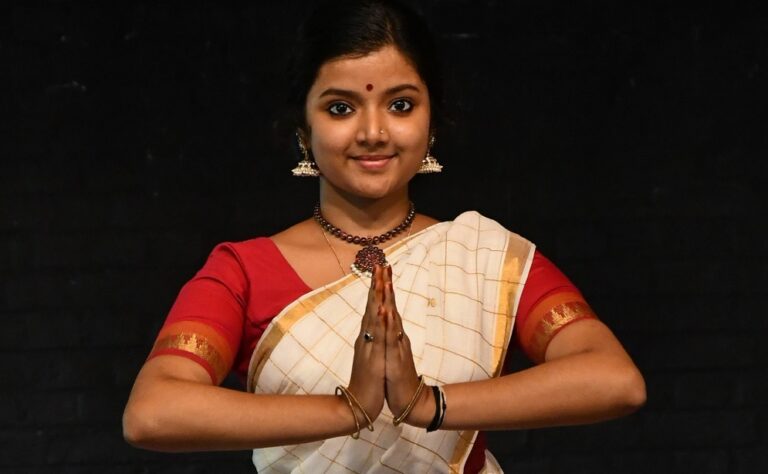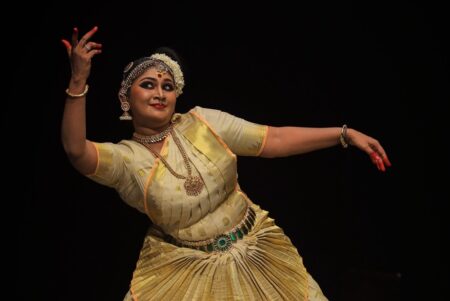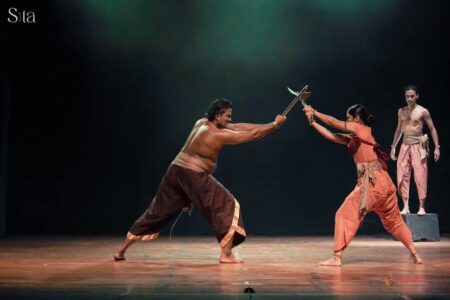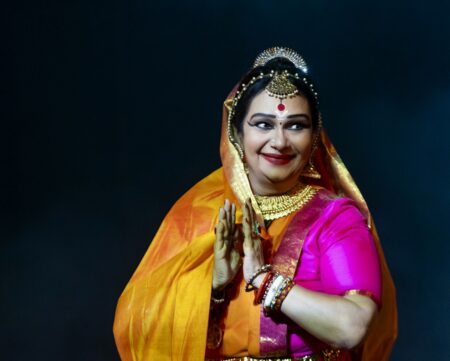Namaskaram in Mohiniyattam is the starting point not just in dance, but also in humility and gratitude.
Every art form follows a set of rules and expects the patrons to follow a rigorous discipline. In the classical dances of India, the guru-shishya equation and tradition is the foundation for learning. In the last article, we discussed how a student is initiated into Mohiniyattam. In this piece, we will talk about the format of Namaskar or respectful salutations, which is the first step in dance.
The Namaskaram method
In the Namaskaram, the student holds the palms together in Anjali hastha (prayer gesture) and sits in the half-sit position or the Aramandala. As the Guru chants the rhythmic syllables (Ta Ka Di Mi Ta Ka Jo Nu), the student separates the hands, taking the arms towards either side of the torso and moves them in a circle until the palms touch again above the head in Anjali hastha.
Finally, a step is then taken forward with the right foot, followed by the left foot. With the feet together, the student takes the full-sit position or the Muzhumandala, and touches the ground with the Pallava hastha hand gesture, touches their eyes and take the hands in a circular movement along the sides of the torso till it touches again in Anjali hastha above the head.
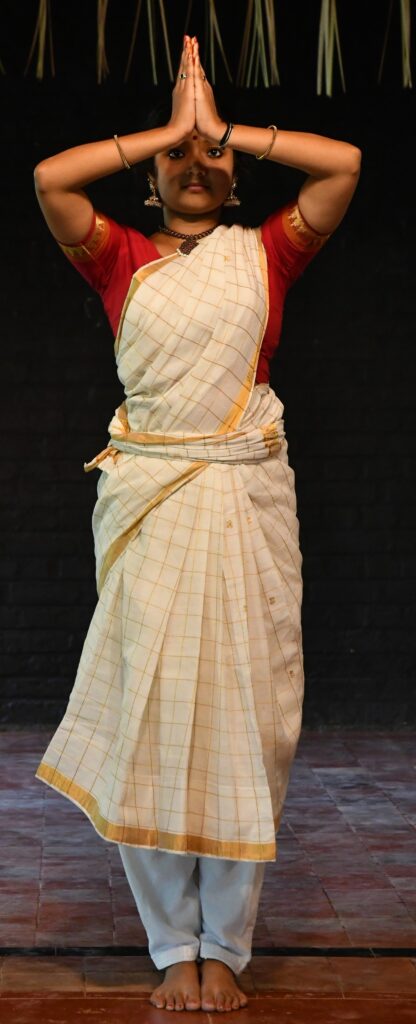
After rising, the student then takes a step backwards led by the left foot, then the right, to finally get back into the original half-sit position of Aramandala.
During this time the Anjali hastha is slowly lowered to the front of the chest. These movements are completed in two cycles of the tala:
Ta Ka Di Mi Ta Ka Jo Nu (16 beats).
This is the first invocation and introduction to the set of starting dance positions that a student of Mohiniyattam is taught. The hand movements that originate from the front of the chest, move along the sides of the torso, and culminate above the head symbolise invocation of the universal spirit and the encompassing of all Gods in one’s hands, a salutation to mother earth and the Guru.
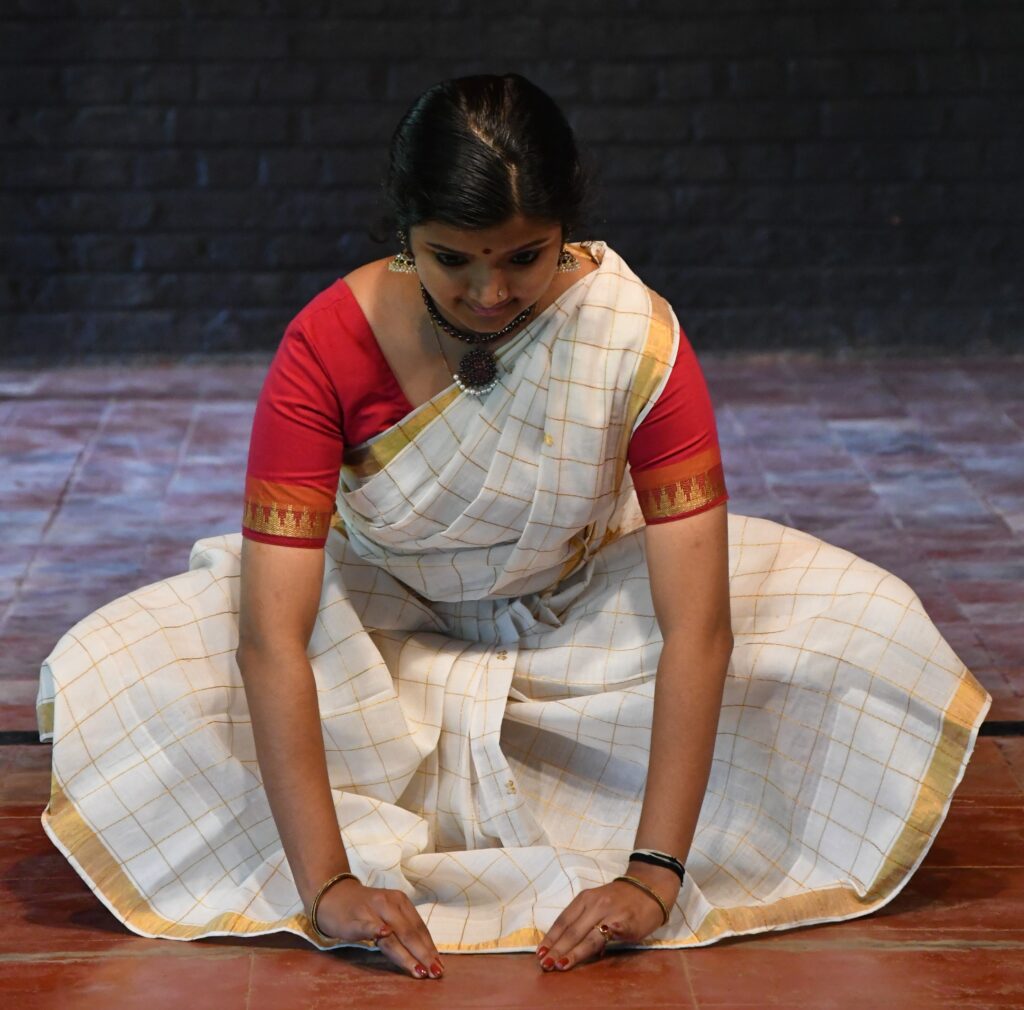
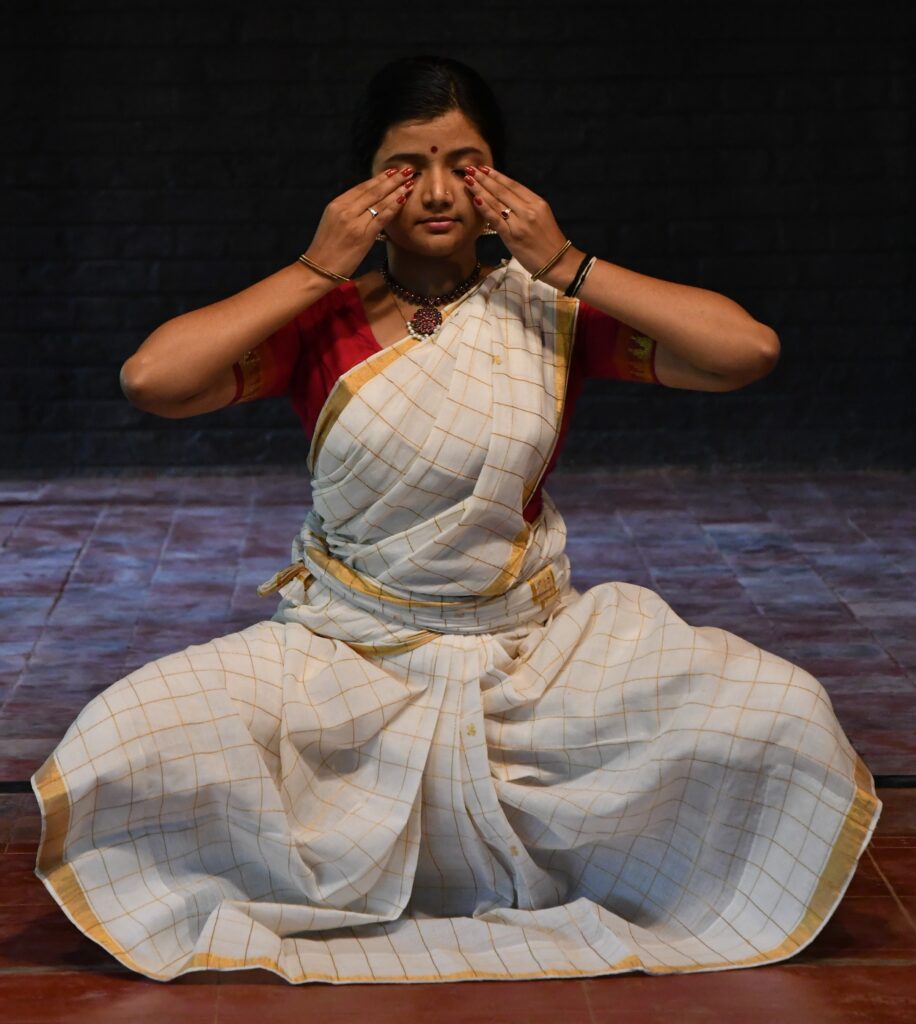
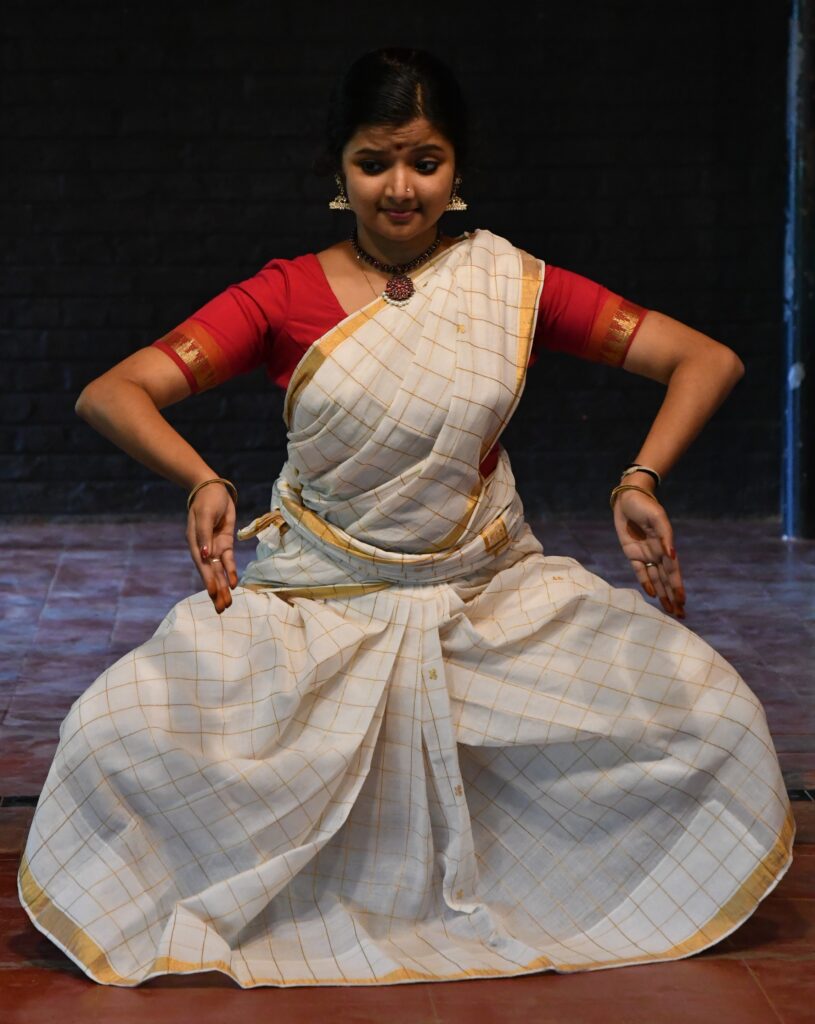
The Anjali hastha above the head, near the forehead and near the chest, indicates invocation of the devas, noble earthly beings, and all others, respectively.
The palms are held together in front of the chest and this connects us to the concepts of Jivatma and Parmatma (per the Advaita philosophy). The palms touch together perhaps acknowledging ourselves to be in complete union with these elements and the universe as a whole.
It is indeed a humble space to commence movement, one that is infused with gratitude. The prayer implies ‘loka samasta sukhino bhavantu’ which means ‘may happiness be upon everyone in the world’.
(Assisted by Sreekanth Janardhanan)
Click here or more on the series
Write to us at [email protected]

